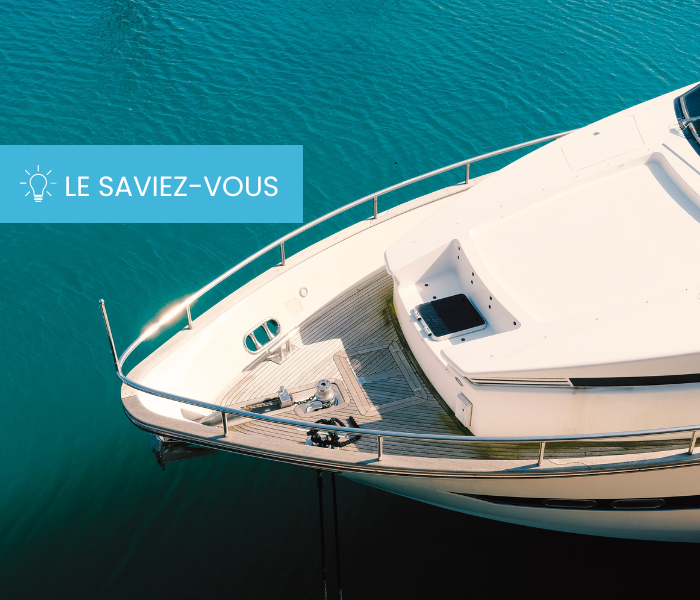Similar to the transformation in the automotive sector, lithium technology is now enabling marine battery manufacturers to innovate and offer more efficient solutions for the design of electric boats.
Two sets of batteries can be carried on board an electric boat: a propulsion battery and a auxiliary battery. Each of these batteries has its own characteristics and plays an important role in the operation of the electric boat.
The importance of the propulsion battery
The electric propulsion battery enables boat builders to free themselves from numerous constraints, whether regulatory or environmental (noise pollution).
For example, at the regulatory level (decree no. 2021-656 of 1 April 2021), internal combustion engine boats have been banned for several years for river navigation, on lakes or in certain protected areas such as certain national parks in France. This restriction has pushed manufacturers to find solutions to be able to continue sailing while complying with the law.
While some manufacturers have turned to hybrid solutions that allow them to switch to electric mode when they are in one of these areas, others have chosen to go 100% electric with a lithium propulsion battery and an electric motor.
How a propulsion battery works
The propulsion battery stores the energy needed to operate the motor of an electric boat. Compared to a petrol boat, the motor of an electric boat does not require the use of petrol. It is powered by the propulsion battery which provides the energy needed to run the boat throughout the journey.

In order to fulfil its tasks, the propulsion battery must meet certain performance criteria.
The characteristics of a propulsion battery embedded in an electric boat
Initially motivated by a regulatory aspect, the transition from thermal to electric power is now proving interesting for boat builders in several respects. This interest is motivated by the characteristics of the propulsion battery and the advantages it offers:
- High power, which is essential for powering the electric motor. This is now possible thanks to the use of certain electrochemical subcategories of lithium, notably NMC (Lithium Nickel Manganese Cobalt). This choice makes it possible to design high-voltage, safe propulsion batteries to meet the power requirements of manufacturers;
- A high energy density to optimise the boat’s range during navigation. The propulsion battery must be able to provide sufficient energy density to guarantee navigation over a long period. This obstacle is being overcome by certain lithium-ion electrochemicals such as LiFeP04 or NMC, which also allow electric boat manufacturers to have a propulsion battery with a high range;
- Reduced environmental impact. Propulsion batteries avoid water pollution. Coupled with an electric motor, it provides all the power and energy necessary to avoid the use of petrol, which is toxic for marine flora and fauna. They also reduce noise pollution.
Several players have already begun this transition to the 100% electric boat, such as Vision Marine Technology. The manufacturer equips its boats with Lithium batteries designed by Neogy for its E-Motion 180E propulsion system. The Lithium NMC cells will allow end users to benefit from a solution with :
- High energy density (70Kwh)
- High voltage
The auxiliary battery
The auxiliary battery is a fundamental pillar of energy redistribution on board an electric boat. It enables all the equipment on board to be powered.
Operation of a auxiliary battery in an electric boat
Unlike a combustion engine boat where the service battery is only used to supply power to the auxiliary electrical components, in some electric boats it can perform two functions simultaneously:
- On some electric boats, the service battery will power the electronics needed to drive the propulsion system (control devices, electrical systems);
- The auxiliary battery also provides power for all the other electronic devices on board the boat (household appliances, lighting, etc.).
The auxiliary battery allows the electronics on board an electric boat to function independently of the propulsion battery. If the propulsion battery is completely discharged, it will still be possible to use the electronic equipment on board until the auxiliary battery is completely discharged.
The auxiliary battery is recharged from the propulsion battery by means of a DC/DC converter charger.

The characteristics of a auxiliary battery in an electric boat
To power the electronic equipment on board the boat, the auxiliary battery must be able to operate for a long period of time. It is therefore necessary to select a battery with a high energy density capable of storing and distributing energy continuously.
Lithium is an effective new alternative for the design of this type of marine battery because of its ability to withstand deep discharges (up to 80% or more) without the battery cells being altered.
The visual below compares the depth of discharge of a lithium-ion battery and a lead acid battery. Unlike lithium batteries, lead acid batteries do not produce enough voltage for normal operation of an application beyond 50% of discharge.

Source : bateaux.com
For safety reasons, most boats are usually equipped with one or more back-up batteries to compensate for a fault or complete discharge of the house battery.
It should be noted that in the design of large boats such as yachts, it is essential to provide several service batteries in addition to the back-up batteries because of their size and the large number of electronic devices on board. Paralleling several service batteries will provide the necessary energy for a continuous power supply.
Neogy, the ideal partner for the design of your electric boat battery
As an expert in batteries and systems, Neogy supports manufacturers and industrialists in the boating and marine industry in the development of their marine batteries.
Would you like to know more about our expertise? Contact our technical team to study your request and assist you in your project. Contact us for more information.

